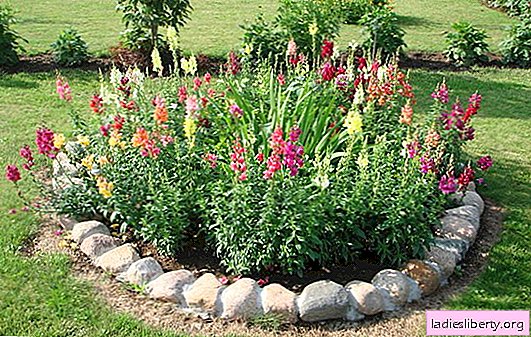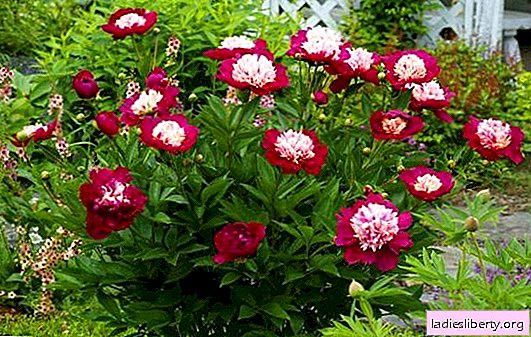
In the northern regions of the country and Siberia, refusing to grow watermelons is not worth it. But first of all, you need to familiarize yourself with the agricultural technology of culture, so that the result does not disappoint. Harsh conditions dictate their own rules, for planting it is necessary to choose a suitable variety, since today there are no problems with this and follow all instructions exactly.
Varieties of watermelons for growing in Siberia
Choosing the right variety is the main component of success. Gourds need a lot of heat and light to ripen, so early ripening varieties are valued in the northern regions. In a short period of time, they are able not only to grow green mass, but also give a good harvest.
Among gardeners, early-ripening varieties are less popular, less demanding on growing conditions:
• Spark - a variety tested over the years with small dark green fruits. The weight of watermelons does not exceed 2 kg, but the taste of the fruit is saturated, moderately sweet.
• Crimson Sweet is a large-fruited variety, the mass of watermelons reaches 5 kg, the flesh is juicy and tasty. Subject to certain rules, watermelons are well stored for several months.
• Siberian - a hybrid bred specifically for cultivation in harsh climates, resistant to temperature extremes. The fruits are juicy, reach a weight of about 5 kg.
• Ultra-early - medium-scrub bush, fruits are small, sweet. The growing season is 80 days.
These are not all varieties that deserve attention. The main thing when choosing a variety is the period of its vegetation. Choose varieties with a short period in which no more than 60-100 days pass from germination to harvesting. As a rule, such varieties are well-zoned, resistant to diseases, temperature extremes and have a long shelf life.
How to grow watermelons in Siberia
In the conditions of a short summer, gourds are planted only in seedlings. That is why they manage to give a good harvest.

To grow seedlings begin in mid-April. First, seeds are prepared, for this they are soaked in a solution of potassium permanganate for 20-30 minutes, after which the water is changed. Subsequent soaking is carried out with the addition of a growth stimulator and fertilizers. So leave the seeds for 1 day in a warm room, after which they proceed to the stage of hardening. For 7 days, planting material is kept in the cold, the lower shelf of the refrigerator, the basement, unheated veranda will do.
Pre-planting treatment allows you to get friendly seedlings, stimulates the growth of sprouts, increases the immunity of plants. It is noticed that in the future they give a high yield compared to other bushes.
The technology for growing watermelons in harsh regions is simple, not much different from ordinary crops, but has its own secrets. So summer residents prefer to grow watermelons in open ground and greenhouses. Which way to choose, only the gardener to decide, each of them has its own characteristics.
Planting and growing watermelons in open ground in Siberia
Ready seedlings are transferred to a permanent place in the first half of June, when the threat of night frost has passed. Before this, it will certainly be tempered to prepare for further cultivation.

For landing choose the warmest place. Prepare high beds in advance so that there is no stagnation of water at the roots, otherwise problems can not be avoided. You can cover the garden bed with black covering material so that it warms up faster, then the seedlings quickly adapt to a new place.
Seedlings are planted by transshipment in order to preserve the earthen lump as much as possible, the lashes are spread in different directions or sent to supports. Flowering begins 2 weeks after planting. Pollinate melon in the northern region will have to do it yourself. With the growth of the ovaries, the yield is normalized, from 2 to 5 fruits are left on one plant. The first watermelons ripen a month after the appearance of the ovaries.
Advice! To get a good harvest, watermelons stepchild, and strongly overgrown leaves are removed.
Melon culture does not require special care, but at the time of pouring the ovaries it is very demanding on watering, it should be regular. But during the fruit ripening period, on the contrary, the watering regimen is reduced. And the ripeness of a watermelon can be judged by its tip, it should be dry.
How to grow watermelons in Siberia: planting in a greenhouse
If a cold summer is expected, it is better to play it safe and plant watermelons in a greenhouse. This method is more reliable, although costly.
For the formation of ovaries and their growth, it is necessary to maintain a temperature of 20-24 during the day and 18 at night. It is important to provide enough sunlight during the ripening period. The greenhouse should be made of modern materials, transmit ultraviolet rays.

Watermelons are grown on the floor or on supports. Bushes are planted at a distance of 70-100 cm from each other. At first, they are shaded with paper or covering material. Seedlings are planted at the end of May, when the earth has warmed enough. In modern greenhouses using special equipment, the timing may vary.
Take care of watermelons in the same way as in the open ground. Fruits are harvested in 35-45 days from the moment of their formation.
Problems in growing watermelons in Siberia
The real problem when growing watermelons in harsh climates is fungal and bacterial diseases. They develop in wet and cold weather.

The following diseases can reduce productivity:
• fusarium wilt;
• powdery mildew;
• white rot;
• root rot;
• bacteriosis;
• anthracnose.
To avoid trouble, plants should be sprayed regularly with chemicals for prevention. The most popular among gardeners is Oksikh, it showed good results in harsh conditions. If the lesion does occur, it is necessary to remove all diseased parts of the plant and immediately treat with copper preparations.
Watch the watering regimen, do not overmoisten the soil, so as not to provoke root rot. The root neck should remain on the soil surface during planting. Periodically disinfect the soil with a solution of potassium permanganate and sprinkle with ash. The disease subsides as soon as warm weather sets in, there will be no sharp fluctuations between daytime and nighttime temperatures.
In addition to diseases, watermelons suffer from melons and gourds. The pest infects the underside of the leaves, while they curl, yield decreases, plant growth stops, and it soon dies. Aphids breed in wet weather.
To avoid defeat, remove weeds from the beds in time, follow the cultivation agricultural technique, dust the bushes with ash, tobacco dust or spray with garlic infusion. If these methods did not help, then the use of chemicals can not be avoided. Of these, the most popular is Inta-Vir. Spraying is repeated after 10-14 days.











